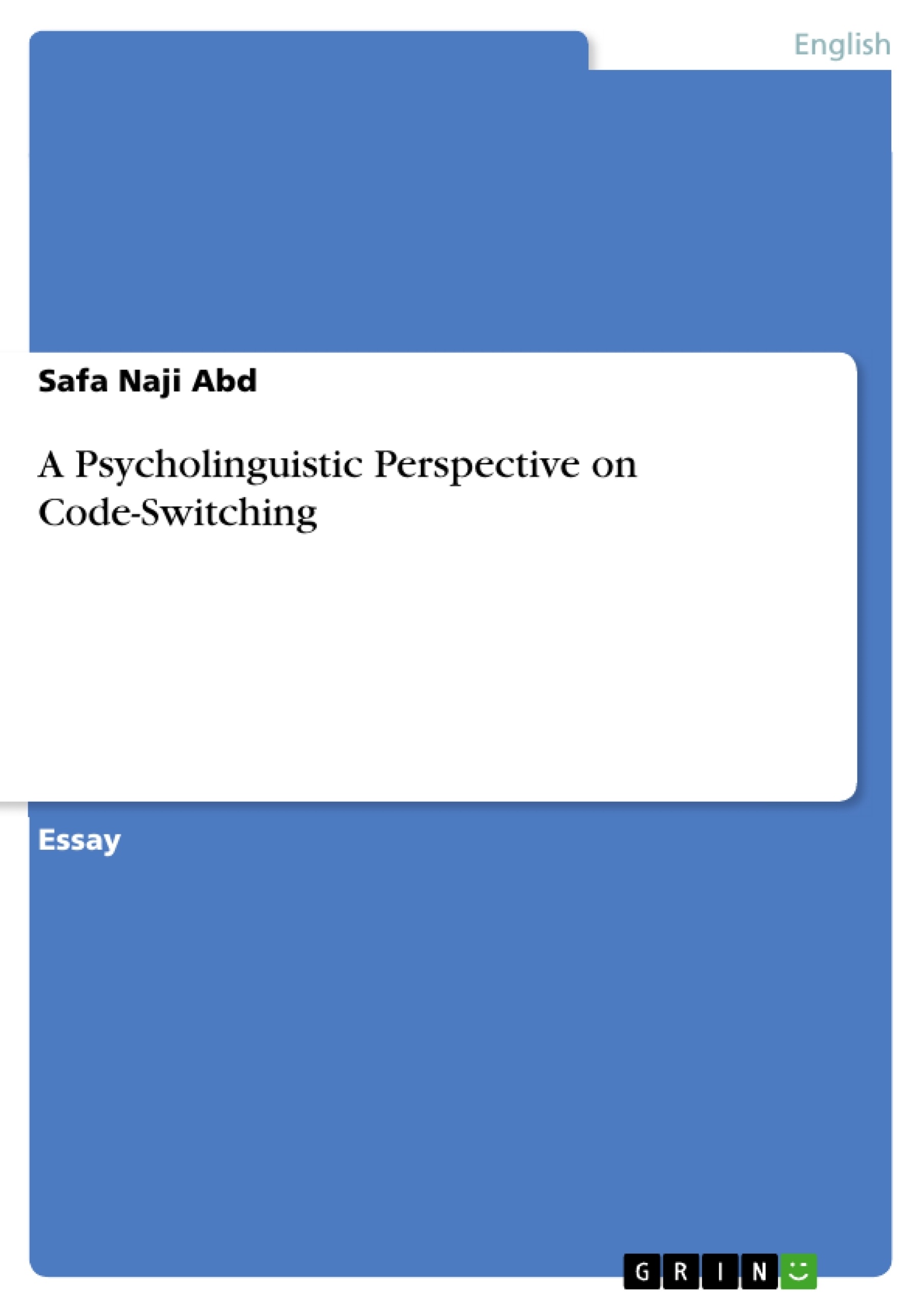The study aims to approach code-switching from a psycholinguistic perspective. It sets itself to shed light on the concepts, factors as contextual and syntactic ones, and models and some other important aspects as when does code-switching occur? And how does it occur?
Language is a mean of communication that is used to convey thoughts, emotions, beliefs etc. One may come closer to grasp in which sense language relates to other cognitive faculties if he can understand the mechanisms of processing, decoding, storage, and production. The study deals with study code-switching from the psycholinguistics perspective. The definitions of the concept, its factors and models are included.
Code-switching cannot be regarded as a universal phenomenon, since it is only widespread in some language communities. It is considered as psychological phenomenon whose causes are obviously extralinguistics, in other words code-switching does not occur only as a result of language use but by mental processes taking place in bilingual’s place.
Inhaltsverzeichnis (Table of Contents)
- Introduction
- What is Code-Switching?
- Psycholinguistics Perspective of Code-Switching:
- Psycholinguistics Factors to Code-switching
- Models of Code-switching
Zielsetzung und Themenschwerpunkte (Objectives and Key Themes)
This study aims to investigate code-switching from a psycholinguistic perspective. It explores the concepts, factors, and models involved, examining how code-switching occurs and the processes that drive it.
- Psycholinguistic perspectives on code-switching
- Factors influencing code-switching, including lexical accessibility, contextual factors, and syntactic dependency distance
- Models of code-switching, such as Levelt's speech production model and De Bot's adaptations
- The role of trigger words in initiating code-switching
- The impact of emotional factors on language use and code-switching
Zusammenfassung der Kapitel (Chapter Summaries)
- Introduction: This chapter provides a general overview of the study's focus, which is to investigate code-switching from a psycholinguistic perspective. It discusses the importance of understanding language processing mechanisms and how they relate to cognitive faculties.
- What is Code-Switching?: This chapter defines code-switching and emphasizes its non-universal nature, specifically noting its prevalence in certain language communities. It explains how code-switching can be viewed as a psychological phenomenon with extralinguistic causes, suggesting that it arises from mental processes rather than solely from language use.
- Psycholinguistics Perspective of Code-Switching: This chapter delves into the concept of motivated code-switching, where language alternation is triggered by specific production conditions. It examines how lexical items similar in both languages can act as triggers for switching, and it highlights the distinction between socio-pragmatically conditioned code-switching and psycholinguistically conditioned code-mixing. The chapter also discusses the unintentional nature of non-functional code-switching, explaining how trigger words, shared by both languages, can lead to a switch in language.
- Psycholinguistics Factors to Code-switching: This chapter explores the factors that can influence lexical activation and inhibition in bilingual speakers, affecting the likelihood of code-switching. It examines baseline lexical accessibility, contextual factors such as language-specific lexical cohesion, triggering words, and collocational strength, and syntactic dependency distance. The chapter also briefly touches upon the role of emotional factors in language use and code-switching.
Schlüsselwörter (Keywords)
The study focuses on key concepts such as code-switching, psycholinguistics, lexical access, contextual factors, syntactic dependency distance, trigger words, and models of bilingual speech production.
- Quote paper
- Safa Naji Abd (Author), A Psycholinguistic Perspective on Code-Switching, Munich, GRIN Verlag, https://www.grin.com/document/1289643




